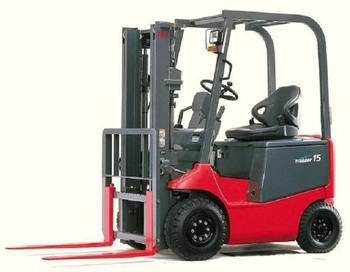 Repair of gantry damage:
Repair of gantry damage: (1) Deformation of the mast to repair the gantry can be corrected by a correction method. When the bending and twisting distortion is small, it is allowed to be corrected by a cold correction method that adds a static load. When the bending and twisting deformation is too large and the cold pressure is not easy to correct, it can be corrected by heating. When heating, the heating area should be reduced as much as possible. The heating temperature should not exceed 700° C., and slowly cool to avoid increasing brittleness.
(2) Repair of gantry cracks If any cracks are found during inspection, repairs should be carried out.
1 The mast should be corrected before repair to maintain the inherent straightness of the mast.
2 Grind the cracks until they show a metallic luster, and then carefully inspect them to determine the crack boundary. Drill the 5 - ¢ 8mm limit stop hole at the boundary extension of 10mm.
3 Grind the bead groove with a grinding wheel at the crack.
4 When welding is performed, DC reverse polarity arc welding is preferable. The arc should be as short as possible. The electrode diameter is 4mm and the current is about 210-240A. When welding, the electrode should be inclined in the direction of 20°-30°. Filling welding work starts from the drilled through hole until the other end of the crack, and also carries out welding repair on the opposite side. The height of the weld should not exceed 1-2 mm above the plane of the base body. The ambient temperature during welding should be above 0°C.
Organic compounds in the narrow sense mainly refer to carbon elements, hydrogen elements, must be carbon-containing compounds, but do not include carbon oxides and sulfides, carbonic acid, carbonates, cyanides, thiocyanides, cyanates, carbides, carbon borane, carbonaceous metals, metal-organic ligand complexes without M-C bonds, some metal-organic compounds (substances containing M-C bonds) and other carbon-containing substances mainly studied in inorganic chemistry.
Organic matter is the material basis of life, and all living organisms contain organic compounds, such as fats, amino acids, proteins, sugars, heme, chlorophyll, enzymes, hormones, etc. Metabolism in living organisms and genetic phenomena in living organisms are related to the transformation of organic compounds. In addition, many substances that are closely related to human life, such as oil, natural gas, cotton, dyes, chemical fibers, plastics, plexiglass, natural and synthetic drugs, etc., are closely related to organic compounds.
Organic Chemicals, Basic Organic Chemistry,Organic Chemistry,Organic Compound
WUHAN RUISUNNY CHEMICAL CO. LTD , https://www.ruisunny-chem.com